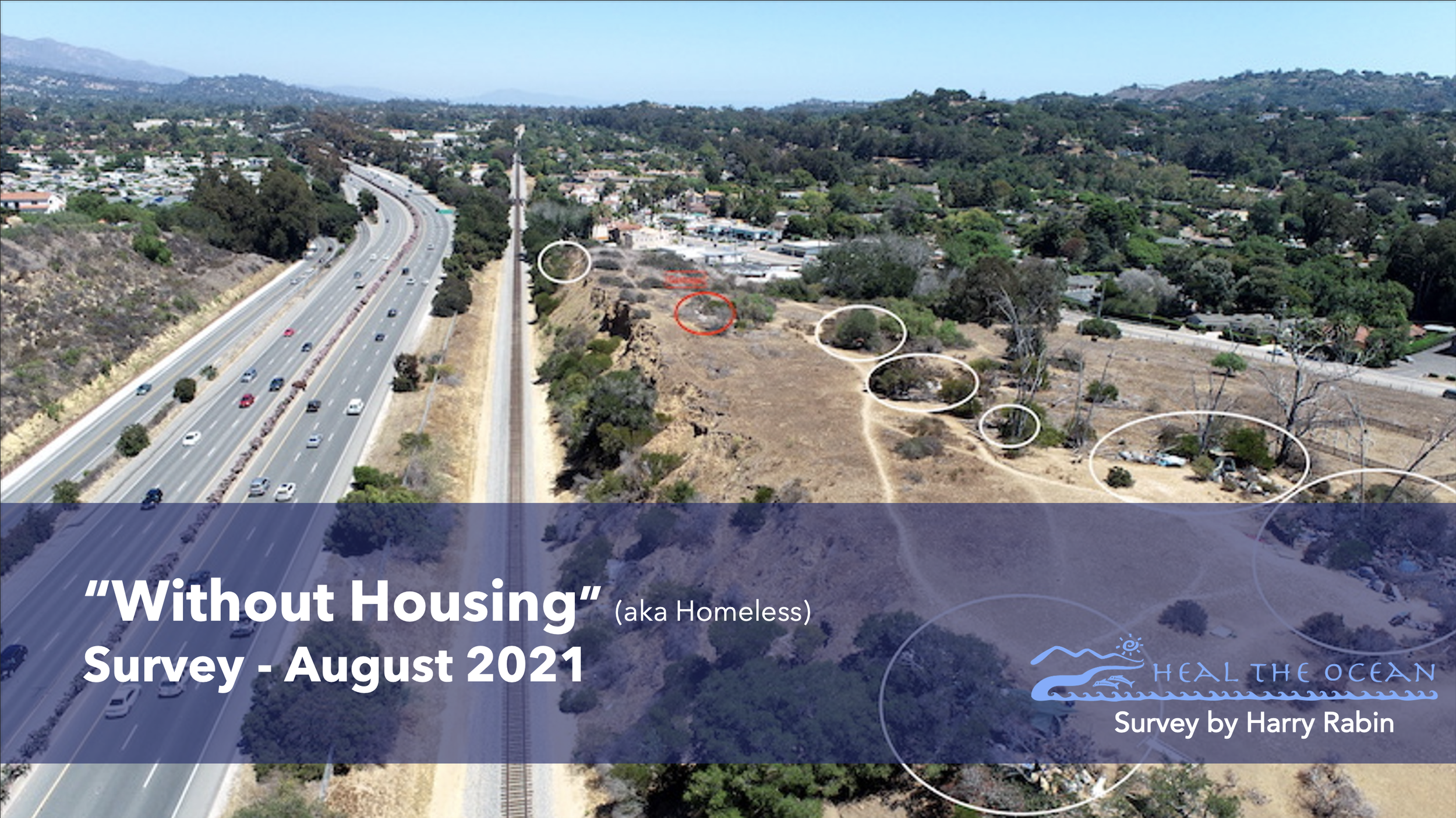Presentation of Homeless Mapping Project
Heal the Ocean began focusing on the unsheltered issue because not only is it unsafe for people to be unsheltered, but uncontained human and material waste poses a threat to the health of the creek watersheds and ocean. Since COVID-19 hit, the unsheltered population multiplied exponentially, also multiplying the amount of uncontained human and physical waste.
Harry Rabin, a member of the HTO Advisory Board, began to survey the camps, from Summerland to Goleta, using drones. Harry visited the camps, photographing and talking to the unsheltered about their situations – while also asking them to put out their fires. Both City and County fire departments, together with Public Health workers, are interested in Harry’s work. His ongoing surveys help the fire officials keep an eye on potential conflagrations. It also provides useful metrics for the housing and health authorities to justify ongoing efforts to house the unhoused.
With State and County programs funding housing for the unhoused things are improving, but not fast enough. Heal the Ocean hopes the metric is expanded upon, and that all unhoused people receive shelter to protect both the unhoused community and the environment.
Homeless Mapping Presentations
February 2022
Following the most recent mass survey period (November 2021-February 2022), On the Wave Productions summarized their findings in the latest survey report. They found the following as compared to the previous August 2021 survey:
30 sites are active as compared to 55 in the previous survey.
19 sites have been abandoned and need cleaning along with 10 major trash heaps that pose an environmental threat and include human waste.
It appears that active site numbers have fallen in both Goleta and Santa Barbara, but there was a slight uptick in Montecito active sites.
August 2021
The survey was conducted again in August 2021 and revealed the following:
Roughly 125 individuals were found to be without housing living along the North and Southbound 101 freeways and alongside the train tracks, decreased from 260-320 individuals in February 2021.
55 active sites were found which was about a 50% decrease from the survey conducted earlier that year in February.
64 sites were cleaned and a substantial overall decrease in debris and waste was recorded.
May 2020
In May 2020 Harry Rabin presented his findings to a large sector of these public officials, and during this meeting, we learned the following:
Of the 1,800 (then) unsheltered in Santa Barbara County, approximately 70 had housing in Santa Maria High School in the north county, and it was appreciated by the guests. (That program is now suspended).
In the south county, there were approximately 40 housed in motels.
Many inmates within Lompoc Penitentiary with comparatively minor infractions were set free, with no halfway house provided, which has added to the unsheltered problem.



